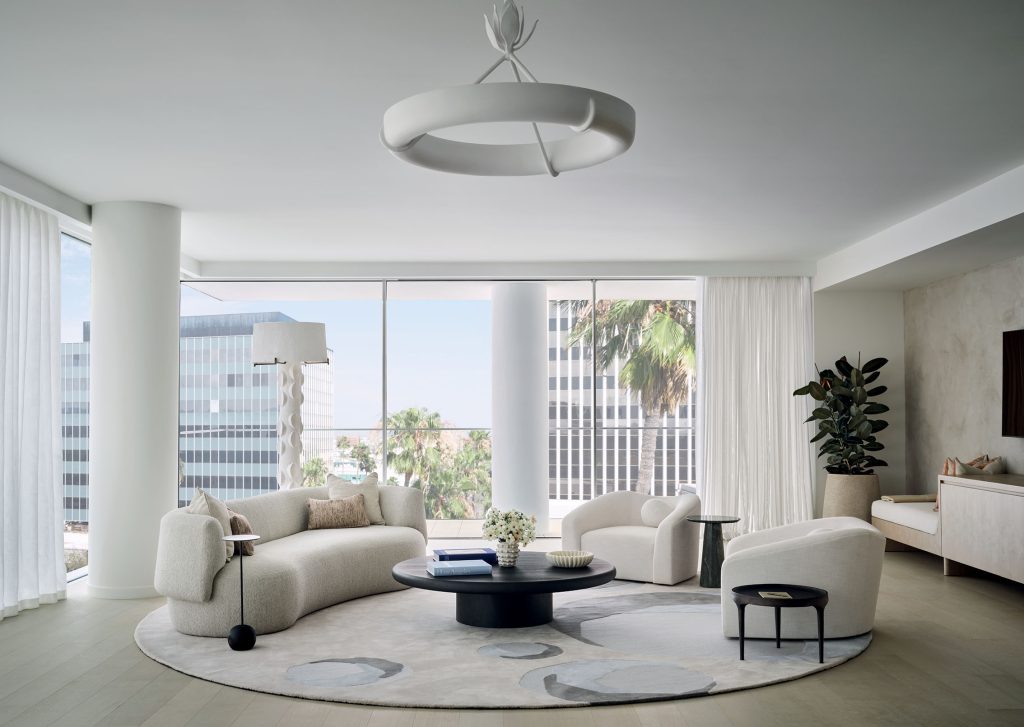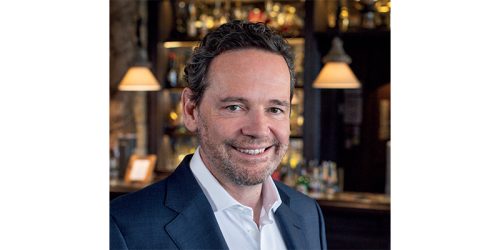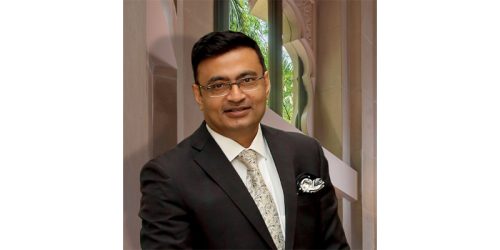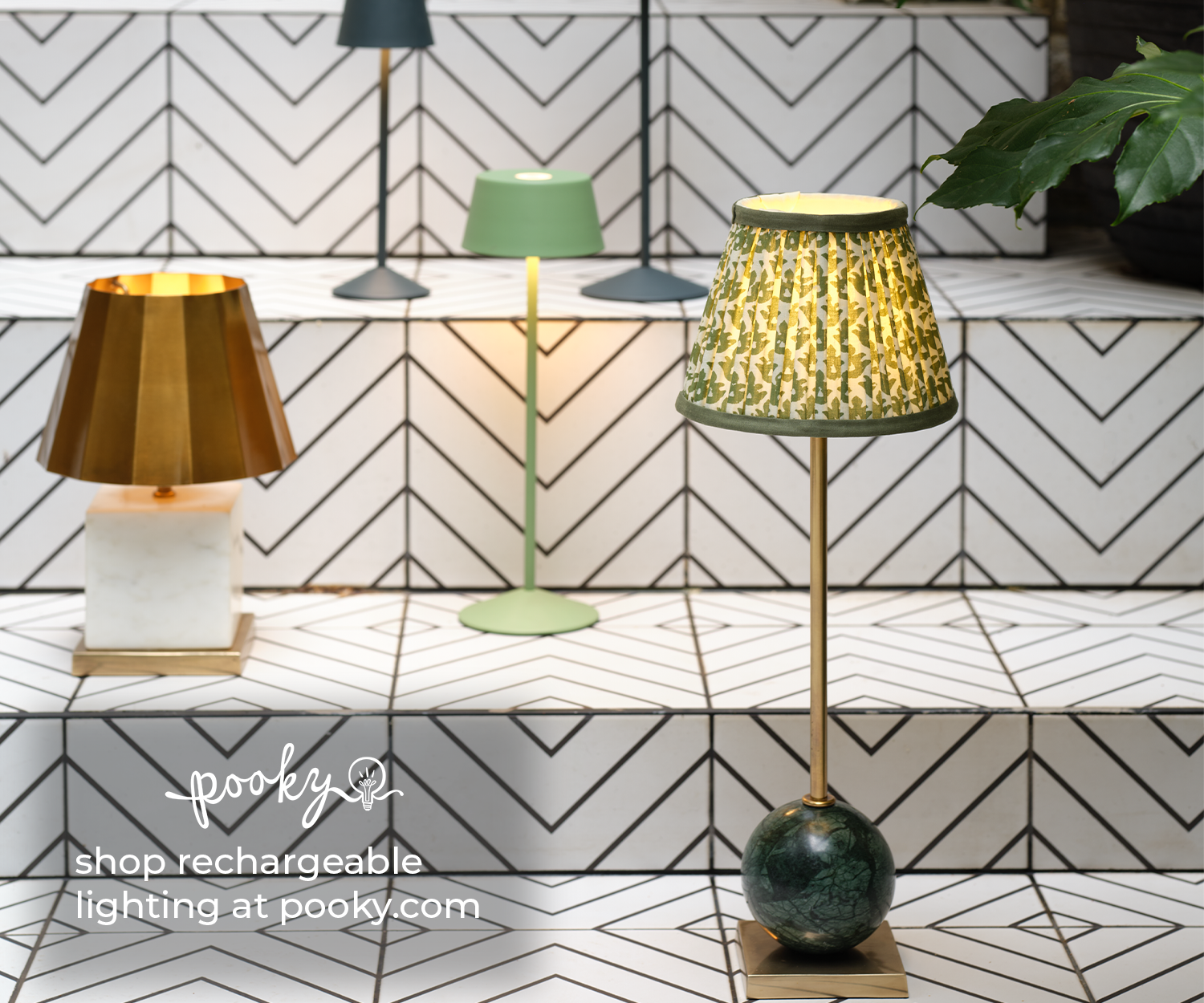1508 London
From beautiful houses in central London to some of the world’s most talked about hospitality projects, all eyes are on 1508 London.
Words by Emma Kennedy
International interior and architecture design firm 1508 London has come a long way since its inception in 2010. Last year alone saw the completion of a multitude of global projects including the much-celebrated Raffles Residences at The OWO and most recently, Cape Grace, a beautiful old colonial-style hotel in Cape Town. Behind its success, and the faultless delivery of luxurious interior design, are three partners: CEO, Stuart Horwood, Global Studios Director, Laura Lockwood, and Business Development and Marketing Director, Hamish Brown, who collectively oversee every nuanced aspect of the business. With firm handshakes and an abundance of good cheer all round, I am welcomed into their newly refurbished headquarters in London’s Victoria.
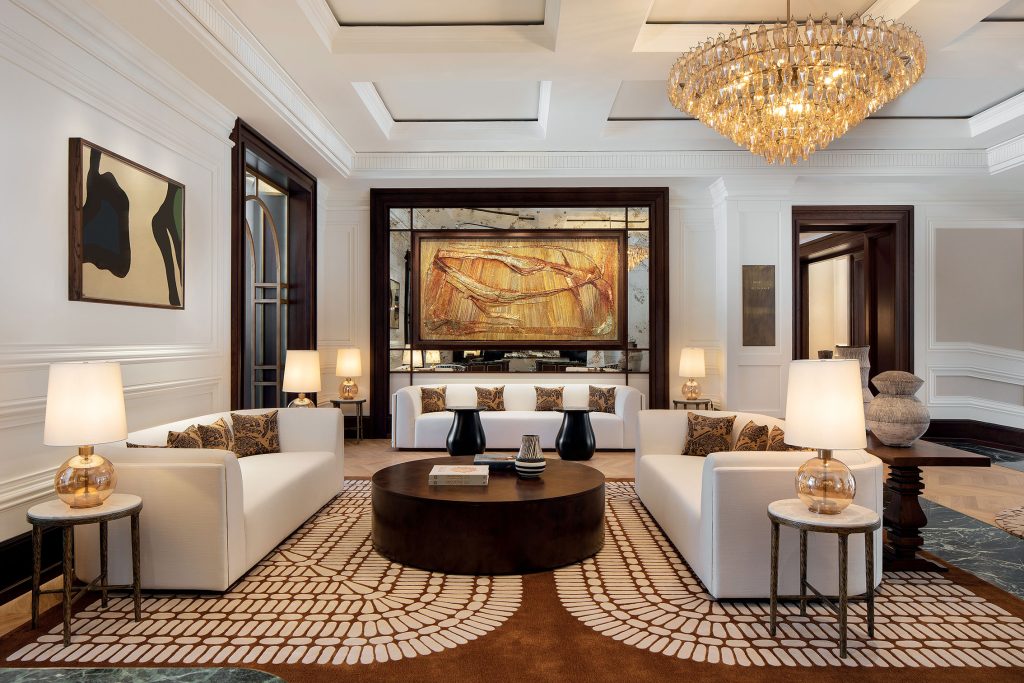
Drawing upon its revered location, Cape Grace is destined to become a modern classic. Photographs courtesy of 1508 London
The interview begins with a brief history lesson as Hamish explains the origins of the company’s name. “The year 1508 is remembered in the art world as the date when Pope Julius II, impressed by Michelangelo’s flawlessly drawn freehand circle, commissioned the artist to paint the Sistine Chapel. I look back at that period and see those great classic painters as rock and roll stars, depicting scenes of heaven and hell that no one had ever seen before – mavericks, reshaping the art world,” he tells me, “And that’s what we felt we were doing when 1508 first started.”
Fast forward 500 years, and the number has taken on a new significance among design aficionados. Whether your mind drifts to the Renaissance or modern opulence, one thing is clear: 1508 is indelibly linked to the pinnacle of design excellence.
With a successful business background in the city, Horwood’s journey with 1508 began when he was initially brought in as a business consultant to help set up and incorporate the company, dedicating just two days a month to help manage and direct the company. Within two years, he was brought in full-time by the new chairman and became the COO. From the outside, the company appeared to be flourishing, but on the inside, the finances were telling a very different story. Explaining the financial landscape he then found himself in, Horwood begins. “The problem was clear – the company was being run by creatives, whose strength was creative and not in running businesses. But as a business consultant, picking up distressed companies, creating strategies and putting them back on the market, was what I did,” he tells me in his matter-of-fact way. “That’s my forte.”
Despite the financial challenges it was facing behind the scenes, 1508’s portfolio continued to grow, and over time the books began to reflect the volume and quality of work that was being delivered. Operating from the offices they still inhabit, the projects were all (firmly in the private residential sector firmly in the private residential sector, and I wonder if the ambition at that point was to cross over into hospitality.
Hamish: “No, not at that stage. To be honest, we were still getting ourselves back on track. We had lots of work – primarily, very beautiful houses in central London, a few more in Dubai and other parts of the world – and as those projects got bigger and bigger, we started to make a name for ourselves. The big break came when we won Chelsea Barracks, and that was our foray into large scale developments.”
Being appointed as the interior designer across all four phases of the landmark Chelsea Barracks development in 2017 propelled 1508 onto the global stage – ultimately leading to notable projects like One Grosvenor Square and the Raffles Residences at The OWO. “Working on the Chelsea Barracks meant for the first time, we were looking at multiples of spaces,” Hamish recalls. “Gyms, spas, residence lounges… and that gave us an appetite to think about hospitality work. The prospect of designing experiential spaces that weren’t just for individual use, was hugely exciting for us from both a creative and business perspective. So, looking back, that really was the beginning.”
Many designers talk about the major differences between the two sectors, and as masters of both, I wonder if they share this view. “No,” is the united response. “Everyone will say there is, but there’s not.”
Laura pauses to think about it a little longer. “If you’re designing a hotel room or suite, then it’s very similar to how you would design a private space. It’s about how you interface and how you use everything within that space. The only real difference is in the public hospitality areas – where you may only spend a few hours and then leave – as a designer you can afford to be more ambitious and creative with these spaces.”
“I also think the level of finesse you find in residential, has always been deemed more ‘layered’, more ‘luxury’,” Hamish joins in, “Hospitality developers always look to the residential sector for that home-from-home feeling. We are seeing a lot of branded residences now which is interlinking the two sectors more and more. The only difference as Laura said, is creating spaces which are experiential – which are fun – to be enjoyed in that moment and leave lasting memories.”
I ask Laura, a chartered architect, how each project is approached. “The process, that initial starting point – regardless of the sector – is always the same. We look hard at the surrounding culture and the unique selling points of that specific location. This allows us to create a timeless design that will still be relevant in years to come. But whatever the aesthetic – classic, contemporary or very modern – it should always feel authentic.”
“These buildings talk to us,” Hamish adds with passion. “And we listen. I always think it’s like walking into someone’s house and seeing a beautiful coffee table. If I ask where it’s from and I’m told Harrods, there’s not much I can say. If I’m told it was found in Mongolia, that the owner had come across some amazing artisans… then I’m completely engaged in the story that will unfold. And that’s what we try to do with every project, find the story and its reason for being.”
Sitting at the very top of the interior design ladder, today 1508 is a global entity. With eight offices, spanning four continents, its design reach is far and wide. As the company continues to evolve, with a new office about to open in Sydney I ask the partners how the challenges have changed since its 2010 launch.
Stuart takes the lead from a business perspective, “Once we were back on track, and delivering projects that were much larger, we needed to hire a different type of person – senior players who had a more structured approach, architects who could project manage – put simply: grown-ups. The next hurdle was setting up the office in Dubai in 2019, before heading west to the Americas, and then on to the Far East. So again, we needed new teams who were able to deliver at this level.”
There’s a huge fun and creative element to design, which is why we all got into it in the first place…It’s wonderfully exciting when you’re hearing a brief from a client, discussing ideas and then sharing those with the team.
As the Global Studios Director, I turn to Laura and ask how big a challenge it is to find candidates for the roles. “Well, it’s interesting,” she begins. “We’re lucky, as the same licencing software, technology, and work stages are used and practiced across the design industry worldwide – so in terms of the fundamentals the skill set is there. However, at this level, the hard part is finding the right people. When I interview designers, I am looking for those who are open minded – who want to understand the business and are happy to embrace the training we offer. Project management, commercial awareness and knowledge is paramount to the success of a project. These projects are next level delivery in terms of design and management, and everyone is required to step up – not just in terms of creativity.”
Its reputation for delivering exceptional projects within the design world is undisputed. Do they think they are perceived as demanding employers? “Yes, I think we are,” Laura says. “We are probably the best in the industry. These projects are the best in the world and the clients are the most demanding in the world, and that is why we only hire the very best performers in the industry. It’s tough at the top,” she concludes.
Keen to stress it’s not quite as scary as it’s beginning to sound, Hamish steps in. “There’s a huge fun and creative element to design, which is why we all got into it in the first place.” It’s worth pointing out, that both he and Laura began their careers in interior design. “It’s wonderfully exciting when you’re hearing a brief from a client, discussing ideas and then sharing those with the team… there’s nothing quite like it.”
Given the sheer scale of some of the projects, I ask if they still get nervous and before the question has landed, the answer is an unequivocal “Yes!”
“Very, very nervous,” Hamish laughs. “It’s so exposing in hospitality because everyone talks about it. You know it’s going to be written about, so all the time you’re thinking – ‘is it going to work?’ We’ve all seen the ones that have failed – not ours,” he’s quick to add. “But you know it can happen and that’s terrifying because there’s nowhere to hide!”
“It’s funny,” Laura adds, “when we work for private clients, it’s super confidential. We have worked for royal families, where you’re not allowed to take photographs, even your phone is confiscated as you arrive on site. So, you’re working on an amazing project, and you don’t have a platform to show anyone. Then the minute you step into hospitality it’s the complete opposite and everyone’s watching.”
So, what are all eyes focused on now? Exchanging excited glances, they fire off a plethora of hotels, branded residences, and developments in quick succession – like the winning team in a pub quiz. “We have an amazing Six Senses in Greece; a Four Seasons in Mauritius; a Conrad hotel in Germany; a Baccarat Hotel in Maldives,” they begin. Many more follow and just as I think the list has reached its end, Hamish adds, “Oh, and Nepal! Three incredible hotels for IHG…” followed by another round of luxurious projects on the boards.
I can honestly say, I have seldom been in the company of such an energised team. Disarmingly honest and engaging – without a hint of arrogance, their focus, drive, and ambition is simple. To be the best and stay there.






